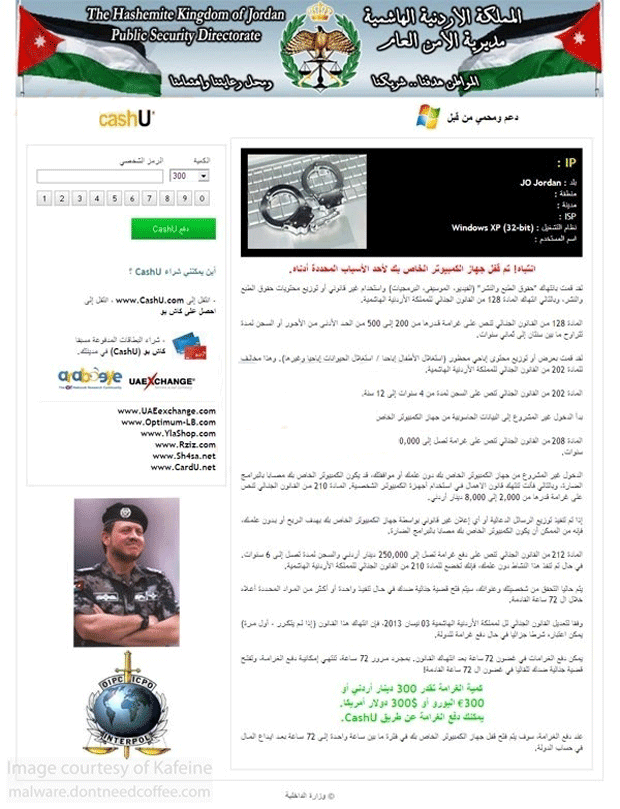Rector Ransomware
Threat Scorecard
EnigmaSoft Threat Scorecard
EnigmaSoft Threat Scorecards are assessment reports for different malware threats which have been collected and analyzed by our research team. EnigmaSoft Threat Scorecards evaluate and rank threats using several metrics including real-world and potential risk factors, trends, frequency, prevalence, and persistence. EnigmaSoft Threat Scorecards are updated regularly based on our research data and metrics and are useful for a wide range of computer users, from end users seeking solutions to remove malware from their systems to security experts analyzing threats.
EnigmaSoft Threat Scorecards display a variety of useful information, including:
Ranking: The ranking of a particular threat in EnigmaSoft’s Threat Database.
Severity Level: The determined severity level of an object, represented numerically, based on our risk modeling process and research, as explained in our Threat Assessment Criteria.
Infected Computers: The number of confirmed and suspected cases of a particular threat detected on infected computers as reported by SpyHunter.
See also Threat Assessment Criteria.
| Threat Level: | 80 % (High) |
| Infected Computers: | 31 |
| First Seen: | July 2, 2015 |
| Last Seen: | May 22, 2023 |
| OS(es) Affected: | Windows |
There has been a marked rise in ransomware infections in the last few years. From a relatively rare type of infection, these types of problems have progressed to become one of the most popular ways in which con artists may harass computer users. PC security analysts have noticed, in recent weeks, attacks involving the Rector Ransomware. This ransomware infection, based in Russia (as many ransomware attacks currently are) uses an attack pattern that is typical of these kinds of infections. The Rector Ransomware takes a computer hostage by encrypting the victim's files. The Rector Ransomware is not as well implemented as many other types of ransomware, but uses an effective encryption algorithm and attack strategy that makes its attack as effective as other encryption ransomware.
Table of Contents
How Encryption Ransomware Attacks such as the Rector Ransomware Work
In the case of attacks involving the Rector Ransomware and other, similar encryption ransomware attacks, computer users' files are encrypted and cannot be decrypted without access to the decryption key. If computer users have failed to backup their files properly, they will not be able to recover them without paying for the decryption key. However, PC security researchers strongly advise against making this payment, since it is not certain that they will be able to decrypt their files even after they pay the amount required by the Rector Ransomware. Attacks like the Rector Ransomware scan the contents of a computer and encrypt all the files with certain extensions, usually targeting documents and media files in order to increase the likelihood of encrypting an important business or school document or treasured family photos or videos. After encrypting a file, the Rector Ransomware renames the file and drops ransom notes in the form of text files on the directories where the Rector Ransomware has encrypted a file. The Rector Ransomware will also change the affected computer's Desktop into a ransom note.
Dealing with Rector Ransomware and Recovering Encrypted Files
PC security researchers advise computer users to remain calm in the face of a Rector Ransomware attack. The people behind these kinds of attacks rely on making computer users panic and act irrationally, often using alarming messages claiming that the decryption key will be deleted after a certain time, increasing the amount of the ransom, or claiming that the files were decrypted as part of a law enforcement operation. Malware analysts advise computer users to avoid paying the Rector Ransomware's ransom unless they have no other choice. These attacks would not be feasible unless computer users continue to pay the ransom, financing attackers' further activities.
In most cases, encrypted files cannot be recovered without having the decryption key. However, there are some rare cases where some of the data can be recovered from the Shadow Volume using tools designed for this. However, like many other ransomware infections, the Rector Ransomware will also delete shadow copies and disable System Restore and other features on the affected computer. The Rector Ransomware infection itself can be removed with the help of a reliable security application that is fully up-to-date, but recovery of the files is not currently possible with available technology. The same encryption technology that allows computer users to maintain their privacy when sending data online is also used, in this case, to attack computer users.
Prevention is the key when dealing with these kinds of attacks. Computer users should backup their files, preferably the entire contents of their hard drive, but at least their essential or irreplaceable files. In any cases, these kinds of files should always be backed up since hard drives will fail and other problems may arise. In most cases, malware analysts recommend the use of an external device for backing up as well as a cloud solution. Keeping a backup of important files means that computer users can restore their files after using a reliable security program to remove the Rector Ransomware.
File System Details
| # | File Name |
Detections
Detections: The number of confirmed and suspected cases of a particular threat detected on
infected computers as reported by SpyHunter.
|
|---|---|---|
| 1. | C:\WINDOWS\system32\imm32.dll | |
| 2. | C:\WINDOWS\system32\lpk.dll | |
| 3. | C:\WINDOWS\system32\usp10.dll | |
| 4. | C:\WINDOWS\system32\MSCTF.dll | |
| 5. | C:\WINDOWS\system32\uxtheme.dll |


